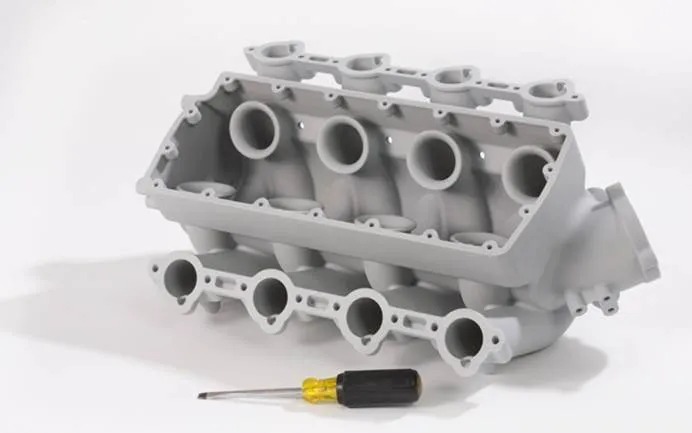The application of 3D printing technology in the casting industry is mainly focuses on three areas:precision casting, rapid casting and plaster type casting.
Conventional castings industry uses open die pressing ,wax casting and wax mold. As a result, the manufacturer is unable to produce small batches of complex parts as manufacturer is limited by high production cost, long production lead time and difficult design verification. As 3D printing technology available, it could change the casting industry with rapid casting method.

The use of SLA light-curing 3D printing technology to producepolymermoldsto replace traditional casting wax molds for casting production can eliminate the need for wax mold opening procedure.Polymer mold’s rapid prototyping technology that meets both the accuracy and surface quality requirements of the casting industry with a high success rate and is more environmentally friendly.
1. SLA light-curing 3D printing technology can make casting production more flexible and adaptable; it is better suited to modern industry's requirements for fast, high quality and complex castings.
2. The application of 3D printing technology in casting structure design and process development provides a reasonable casting structure and a suitable process solution.
3. It simplifies the process of mold production and wax mold, so that the whole production period will be greatly reduced.
4. Complex structure parts can be produced with good quality and precision.
5. Relatively low cost, flexible design, clean and environmentally friendly, suitable for complex castings and other characteristics, those characteristics make 3D printing technology in line with the trend of new century and has a broader development prospect.
- For design optimization when the design has yet been finalized
- When delivery times are tight
- When the quantity is too small (less than 50 pieces) and not feasibleto open a mold
- When the parts structure is too special and impossible to develop a mold, it is generally used for light weight, shaped curved structural parts
- When need to test parts to verify design concept
For more information about 3D printing in casting ,please feel free to contact SoonSer 3D.